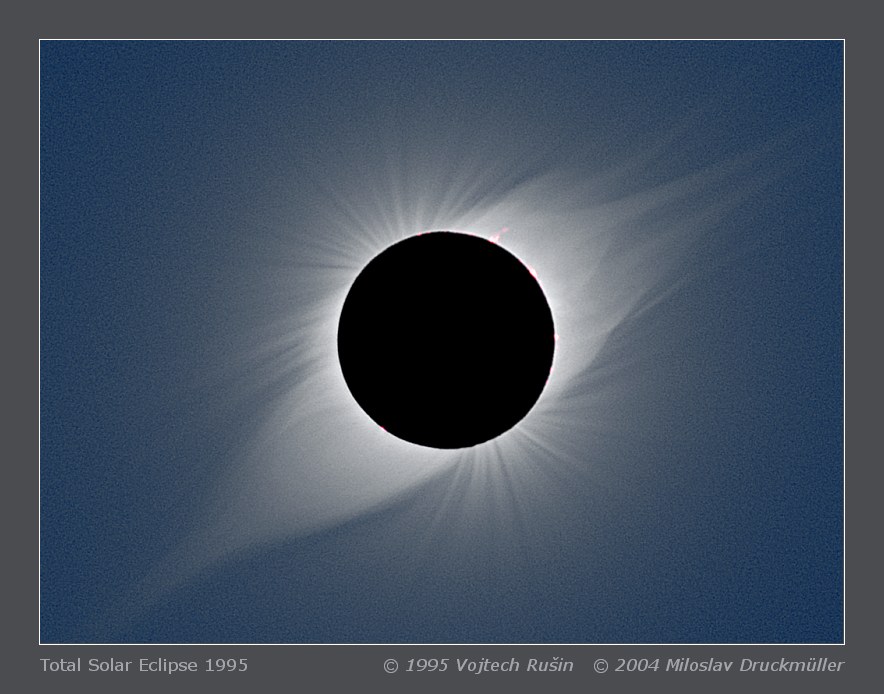| Image | Se1995i_cor1.jpg |
| Date | 24. 10. 1995 |
| Time | Second contact: 03:02:43 UT, third contact 03:03:33 UT
Total eclipse duration 50s |
| Place | India (Rajastan), Nim Ka Thana |
| Coordinate | N 27° 44', E 75° 48' |
| Conditions | Very good |
| Optics | Zeiss AS 15/3000 mm
8/500mm lens |
| Resolution | 8.90 arc sec / pixel (image on this Web page) |
| Film | Kodak Ektachrome 100 Plus (5005 EPP) of 24×36mm format for 8/500mm lens
Kodak 1781 slide film of 18×24cm format for Zeiss AS 15/3000mm |
| Processing | Composition of 10 images,
8 images taken with 8/500mm lens - exposures 4s ... 1/30s,
2 images taken with Zeiss AS 200/3000mm telescope,
Images were aligned by means of phase correlation technique and then processed using Corona 3.0 software.
Image processing by Miloslav Druckmüller |
| Scanner | Nikon Super Coolscan 4000 ED (16x multisample) for 24×36mm images
Canoscan 9900F for 18×24cm images |
| Software | PhaseCorr 3.0, Corona 3.0, Sofo ACC 6.0 |
| Note | The graph above the table shows the average values of the relative number of sunspots in which the red arrow indicates the time of 1995 eclipse. Graph was created according to data from Sunspot Index Data Center, Brussels. |
| Orientation | The image must be rotated 30.0° clockwise to achieve the standard orientation i.e. North top, East left |
| Copyright | © 1995 Vojtech Rušin © 2004 Miloslav Druckmüller |

